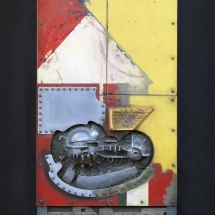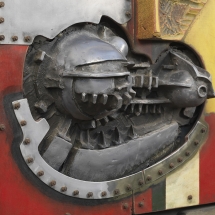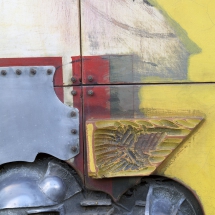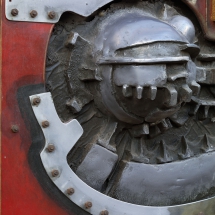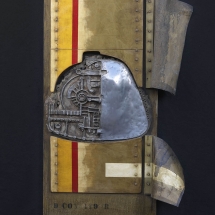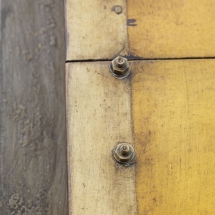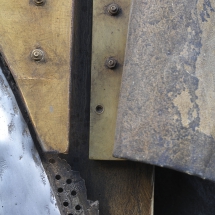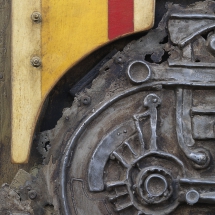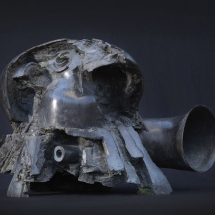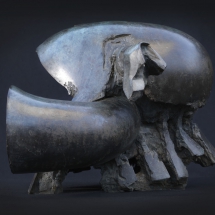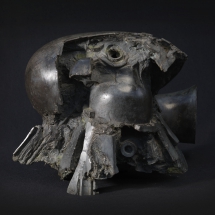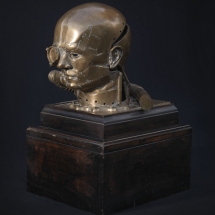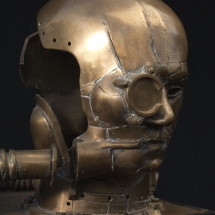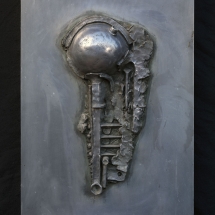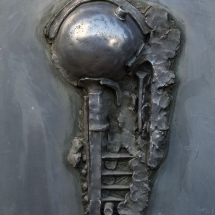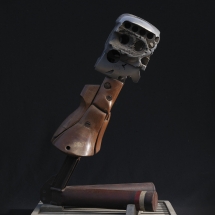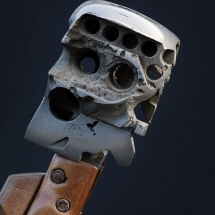THE SOMME: SERIES ONE – 1970-1980
Painted reliefs in plywood and aluminium.
The first works were a series of drawings made over three days on the site of the Front Line at Beaumont Hamel. These resulted in a number of reliefs made of plywood and painted. Aluminium parts were either war debris or castings made in the foundry at Chelsea School of Art. The two sculptures “Wayland” and ‘Y Ravine’ were also made while I was teaching at Chelsea.
The influence of the waste of life of the Somme Battle (1916-1917) extended to two series. The first consisted of painted reliefs and the second cast in bronze.
On July 1st 1916 Y Ravine was a formidable example of German defence in depth, dug into a reverse slope in chalk that was almost shell-proof, surrounded by thick belts of barbed wire and well provided with machine-guns and light mortars. Against this the battalions that made up 29th Division had no protection. They followed orders, advancing slowly and in line burdened with a great weight of kit and ammunition.
More than thirty years ago I made a piece of sculpture called Y Ravine, named after the stronghold in the German line. Y Ravine was made out of welded steel, cast aluminium and carved and polished wood. It had a very slight resemblance to a bowed human figure but equally it was constructed like an infantry weapon that one could dis-assemble and carry on ones back. This piece filled several viewers with revulsion. From the opposite view, a former soldier turned artist came up to me after a lecture in Hull in the early eighties. He had done two tours with the East Yorkshire Regiment in Belfast and Derry and still suffered nightmares and depression. He told me that I was the first art-lecturer who made any sense to him. A painter friend said that I had not decided whether Y Ravine was a condemnation or a celebration of war. I did not reply but this was perceptive of him. It is both. War has a terrifying attraction. Unless we admit its seduction we can never hope to cure this fatal disease.
1971
Aluminium & Painted Wood
Unique
107.5 cm high
1971
Aluminium & painted wood
Unique
122 cm high
1978
Bronze
Unique
40 cm high
1969
Bronze with wooden base
Unique
60 cm high
1971
Aluminium
Unique
86 cm high
1978
Aluminium, steel & mahogany
Unique
85 cm high
